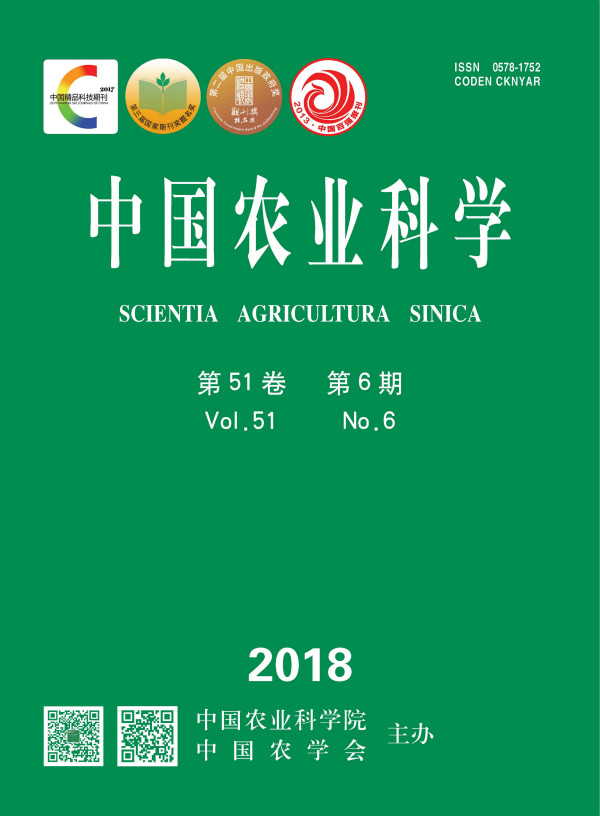-
Effects of Nitrogen Fertilizer on Dry Matter Accumulation, Transportation and Nitrogen Metabolism in Functional Leaves of Broomcorn Millet at Late Growth Stage
- GONG XiangWei, HAN HaoKun, ZHANG DaZhong, LI Jing, WANG Meng, XUE ZhiHe, YANG Pu, GAO XiaoLi, FENG BaiLi
-
Scientia Agricultura Sinica. 2018, 51(6):
1045-1056.
doi:10.3864/j.issn.0578-1752.2018.06.004
-
 Abstract
(
408 )
Abstract
(
408 )
 HTML
(
12 )
HTML
(
12 )
 PDF (450KB)
(
821
)
PDF (450KB)
(
821
)
 Save
Save
-
References |
Related Articles |
Metrics
【Objective】 The propose of this study was to investigate the basis of nutritional requirement and supply on high quality of broomcorn millet through studying structure characteristics of dry matter and regularity of nitrogen metabolism in functional leaves of broomcorn millet at late growth stage under different nitrogen levels.【Method】Broomcorn millet cultivar of Yumi2 was selected as the material in a field experiment from 2015 to 2016. Dry matter accumulation, distribution and transportation were conducted at heading stage, flowering stage, filling stage and maturity stage under different nitrogen levels of 60 kg·hm-2 (N1), 105 kg·hm-2 (N2), 150 kg·hm-2 (N3), 195 kg·hm-2 (N4), and glutamine synthetase (GS) activity, nitrate reductase (NR) activity, free amino acids and soluble protein content in functional leaves were detected, as well as yield and yield components were analyzed. The correlation between the dry matter accumulation, transportation of broomcorn millet and nitrogen metabolism of the leaves or yield were summarized.【Result】The results showed that the accumulation of dry matter of above-ground organs increased with increasing N application rates up to 150 kg·hm-2, and then decreased when N application rate was 195 kg·hm-2. The stem dry weight, leaves dry weight, sheath dry weight and spike dry weight under N3 treatment increased 51.2%, 40.8%, 64.2% and 41.3%, respectively, compared with the non-fertilization treatment at the flowering stage. Transportations of dry matters in different organs were improved by applying nitrogen fertilizer. Distribution rate of aboveground organs were increased to grain after heading, which increased 9.6% under N3 treatment, compared with the non-fertilization treatment. The GS activity, NR activity, free amino acid and soluble protein content in different leaves were upward-declined under nitrogen treatment. Nitrogen metabolism activities were the flag leaves > the second leaves >the third leaves at the same period, among them, N3 treatment reached the maximum value, but the overall change of nitrogen metabolism was not affected in functional leaves. Compared with no nitrogen application, the nitrogen content of grain under N1, N2, N3 and N4 treatments increased by 4.0%, 6.0%, 7.8% and 8.9%, respectively, and the protein content of grain by nitrogen fertilizers were significantly increased by 3.89%, 5.75%, 7.54% and 8.59%, respectively. The length of millet, the number of stalks, the number of panicles and the grain weight and the yield were also significantly increased by nitrogen fertilizer. Compared with no nitrogen application, in 2015, yield of broomcorn millet under N1, N2, N3 and N4 treatments were significantly increased by 10.09%, 29.71%, 44.73% and 35.99%, respectively. In 2016, which were significantly increased by 19.08%, 30.60%, 65.85% and 39.14%, respectively. The biggest increase in virginity was N3 treatment in two years. Therefore, N3 treatment was the best effect on increasing yield. 【Conclusion】The dry matter accumulation, transportation and nitrogen metabolism in functional leaves of broomcorn millet could be promoted by nitrogen fertilizer at late growth stage, and yield and yield components could be improved. Under this experimental condition, N3 treatment (150 kg·hm-2) was the suitable amount of nitrogen in Yulin, Shaanxi.









